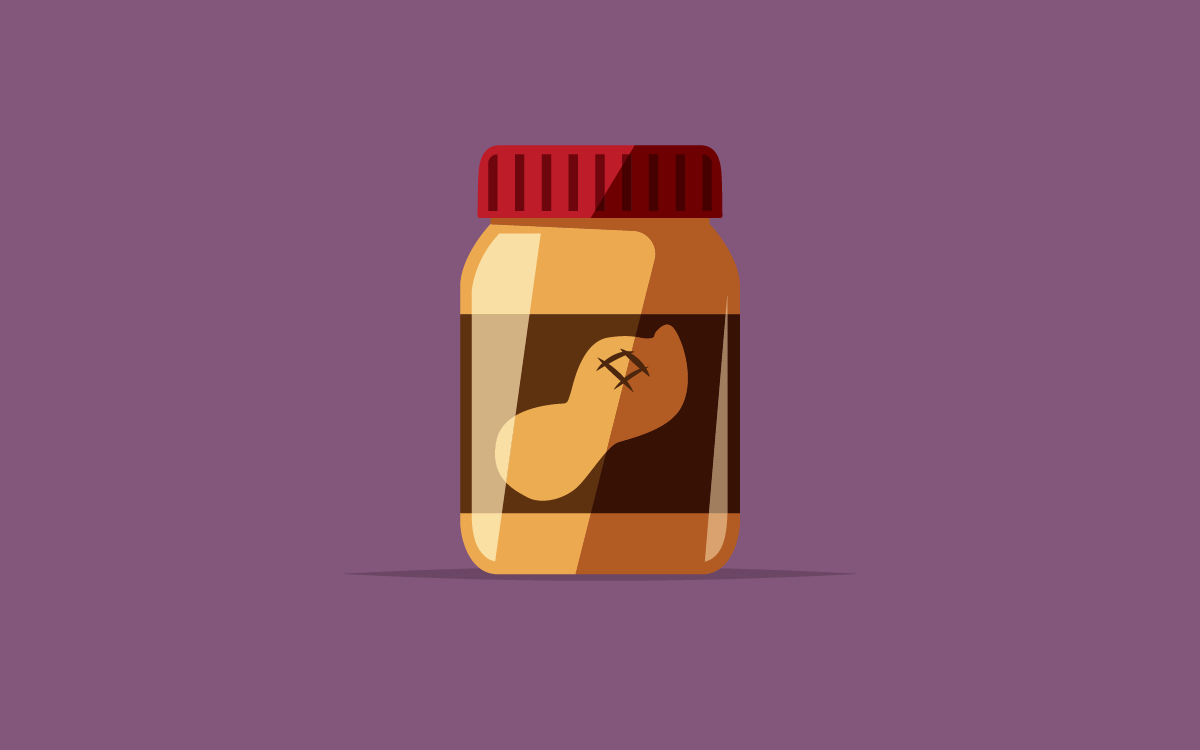new to the gluten free journey?
new to the gluten free journey?

It can be tough to sort through what is and is not gluten free. In most cases, the answer is not so simple. That is the case with peanut butter. Is peanut butter gluten free? Is it safe for those with celiac disease or non celiac gluten sensitivity?
In its simplest, natural, unadulterated form, peanut butter and peanuts do not include any gluten containing ingredients. However, this doesn’t mean all peanut butter is safe for your gluten free diet. In the following sections we will discuss what to watch out for when choosing peanut butter on a gluten free diet.
Peanut butter made with simple, carefully sourced and handled ingredients like peanuts and a touch of salt is naturally gluten free. However, this doesn’t mean all brands are gluten free.
The biggest culprit causing peanut butter to not be gluten free is cross contamination. During the manufacturing process, it is common that peanuts can come into contact with gluten containing ingredients, machinery, or packaging.
Some brands take care to ensure that their peanuts are kept separate from other ingredients, and use manufacturing facilities that do not contain gluten containing products.
Therefore, it is important to check the labels of the peanut butter you purchase. The label should explicitly note that it is certified gluten free. This indicates that the product was made carefully and tested for gluten.
There are dozens of peanut butter brands on the market, but it can be overwhelming to sort through them to find one that is truly gluten free and otherwise good for you. Luckily, there are few brands that are committed to using high quality ingredients and skipping the unnecessary and damaging filler ingredients. Here are the best gluten free peanut butter options:
It is important to note that peanuts and other nuts and legumes contain substances known as antinutrients. Antinutrients are compounds that can interfere with the absorption of vitamins and minerals and can inhibit digestive enzyme production. When eaten in excess, this can create concerns around nutrient deficiencies. In addition, some people may experience digestive discomfort when eating foods containing antinutrients.
Common antinutrients include lectins in legumes and grains, oxalates in green leafy vegetables, tea, beans, nuts, beets, phytates (or phytic acid) in whole grains, seeds, legumes, some nuts, saponins in legumes and whole grains, and tannins in tea, coffee, and legumes.
It is not necessary to avoid all foods containing antinutrients at all times, but it is helpful to be aware of their existence, as you can mitigate their effects in two ways:
So how can you use gluten free peanut butter? Here are a few creative ways to add healthy protein and fat into your gluten free diet:
Peanut butter can be a good addition to your gluten free diet. As always, just be sure to purchase a brand that uses quality ingredients and is committed to providing a certified gluten free product. Want to learn more do’s and don’ts of your gluten free diet? Take the Sensitivity Test and keep up with the Gluten Free Society’s blog for all things gluten free!
Stay up-to-date with the latest articles, tips, recipes and more.

*These statements have not been evaluated by the Food and Drug Administration. This product is not intended to diagnose, treat, cure or prevent any disease.
If you are pregnant, nursing, taking medication, or have a medical condition, consult your physician before using this product.
The entire contents of this website are based upon the opinions of Peter Osborne, unless otherwise noted. Individual articles are based upon the opinions of the respective author, who retains copyright as marked. The information on this website is not intended to replace a one-on-one relationship with a qualified health care professional and is not intended as medical advice. It is intended as a sharing of knowledge and information from the research and experience of Peter Osborne and his community. Peter Osborne encourages you to make your own health care decisions based upon your research and in partnership with a qualified health care professional.